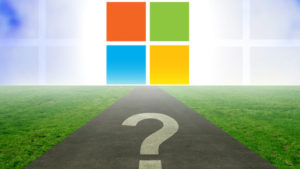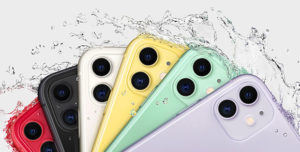
Microsoft was once rapidly growing like Google and Apple. Then it changed. It became a very large, but very slow growing company. These days it seems stuck, struggling to break into other businesses. By the way, the same thing is starting at Apple too.
The growth wave Microsoft rode crested years ago, but it hasn’t been able to catch the next wave. It is still successful, just not rapidly growing in new sectors. Why? What should it do?
My Pick of the Week is LightSquared. Is it coming back?
Stability vs. Innovation
CEO Steve Ballmer has been with Microsoft, along with Bill Gates, since the beginning. He is still excited and visionary. However, the company simply no longer connects with today’s customers for new products and services. There’s a reason for that.
There are two parts to Microsoft. One is focused on the Windows operating systems and software like Office. The other is the innovative part, trying to become successful in other businesses, like wireless.
If you had asked me a year ago, I would have said Microsoft’s software side was strong while its innovation side was not. However, today I have to say both are missing the mark. Microsoft seems to have lost its ability to connect with users on both existing and new products.
The reason is obvious to me, from both my analyst and customer perspectives. Microsoft has been trying to succeed in wireless for a decade, without much success. Recently it partnered with Nokia on Lumia. It is getting better — however, the marketplace is also continuing to move ahead. That’s why it decided to completely transform its operations and blend its operating systems, software and devices.
This is the same successful path Apple has taken over the years. The general idea makes a lot of sense, but the problem is it does not work for Microsoft. Microsoft is not Apple. Microsoft’s customers are not Apple customers.
The Apple brand has two meanings. One is for customers who buy and use their software and devices separately. The other is for customers who buy separate pieces and want them to sync and work together. Apple has both sides taken care of, so no one is cut out. Apple delights customers.
When Apple updates its software, it doesn’t radically reinvent it, the way Microsoft does. That is another important key.
Microsoft sees Apple’s success and is trying to imitate it. Fine. However, it is changing too much, too quickly, and not giving customers a chance to catch their breath. Customers don’t have an escape hatch.
A segment of the Microsoft customer base likes innovative change. However, a larger segment takes longer to adapt to it, and those folks are being rudely ignored. Microsoft does not care about making its customers feel comfortable. That is another key problem.
Microsoft sees the threat of a changing industry and thinks it needs to completely reinvent itself, all at once. That’s another problem. It should take a longer time to give customers the chance to choose this change. Don’t make it a single event — like it or not.
Microsoft has always been that way. It always directed. It did not care about the customer. That is another problem. It always was a problem, but since there was no real alternative other than Apple, Microsoft didn’t suffer. That is changing now. There are other choices, and those alternatives are increasing.
A Different Kind of Change
Microsoft must change the way it interacts with the industry or it will continue to lose. The idea of an innovative new product sounds perfect — however, the changes are too great for many to adapt quickly. That’s the problem. Patience is an attribute that Microsoft has never had.
Sure, some users like new ideas and want change. Some want to use multiple devices and have them all work together and want an entirely new Windows experience.
However, the majority of customers are not there yet, and their needs are being ignored. Those customers would prefer not to have to make such a dramatic change. They don’t want to be forced to spend so much time and energy learning a new software program.
I don’t think Microsoft gets it. It doesn’t think from the perspective of the customer — how much time and aggravation is involved in learning a new operating system. Microsoft doesn’t look at this from the customer perspective — only from the investor perspective. That’s another problem.
This is a basic flaw in Microsoft’s thinking. It has always been its problem. Rather than just tweaking and improving the software, it totally reinvents it every few years. This requires all of its customers to invest substantial time and energy, simply to learn how the new software works. Customers are busy. They are actually unhappy with Microsoft for this very reason.
I, along with millions of others, have been a Microsoft customer for decades. However, I don’t know if that will continue if I am forced to make such dramatic changes. All of a sudden there are viable options, and that is the problem for Microsoft.
Microsoft should give satisfied customers the ability to keep their existing software and operating systems like XP and Office, and simply pay a small, annual fee to keep the version current and updated. That would keep everyone happy — the customers and Microsoft’s investors.
That would be innovative and very successful. Why has it never thought of this before? The reason is it wants to keep growing. It wants to force all its customers to buy more software.
Customers Crave Choice
Microsoft needs to change its thinking from solely an investment perspective, to a customer and user perspective. If not, it will suffer.
That’s the big problem for Microsoft going forward. There are two different customer groups: One wants innovation — radical change; the other does not. Only one is being served, and that’s why the majority of Microsoft customers feel abused.
Abusing the customer base will no longer work, as customers have more choice. The cloud is changing everything. Google and Apple and others will continue to grow and eat away at Microsoft unless it begins to understand the problem and change its thinking. It’s that simple.
So far, Microsoft is trying to force its entire customer base to jump through hoops, like it did 20 years ago. That will hurt the company going forward — both its Windows and Office divisions and its mobile and tablet operations.
Innovation is great. However, don’t force your customers to innovate on your time frame. Let them do it on their time frame. Make your customers love you. Don’t let them feel neglected and abused. That is the only way to succeed in a changing marketplace. Microsoft, you are no longer the only choice in town. The sooner you realize that the better off you will be.























































Social Media
See all Social Media